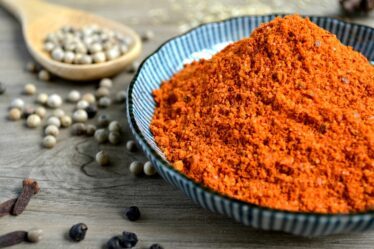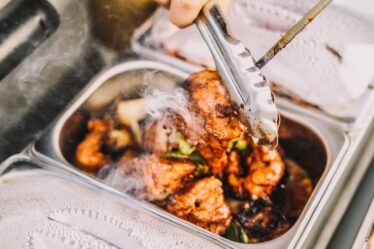
Chinese spices are an essential part of Chinese cuisine, adding depth and complexity to dishes. They have a long history and are used for both culinary and medicinal purposes. In this blog post, we will explore the history, health benefits, and usage of Chinese spices.
Key Takeaways
- Chinese spices offer a world of flavor to enhance any dish.
- The history of Chinese spices is a culinary journey through time.
- Chinese spices offer numerous health benefits beyond just flavor.
- A guide to basic Chinese spices can help elevate any dish.
- Tips and techniques for using Chinese spices can maximize their flavor potential.
The History of Chinese Spices: A Culinary Journey Through Time
Chinese spices have been used for thousands of years, dating back to the Han dynasty. Spices were used to preserve food, add flavor, and for medicinal purposes. The Silk Road played a significant role in the spread of Chinese spices to other parts of the world.
The Health Benefits of Chinese Spices: More Than Just Flavor
Chinese spices have numerous health benefits, including anti-inflammatory and antioxidant properties. Spices like ginger and garlic have been used in traditional Chinese medicine for centuries. Chinese spices can aid in digestion, boost the immune system, and improve overall health.
The Most Common Chinese Spices: A Guide to Basic Ingredients
| Spice | Flavor Profile | Common Dishes | Health Benefits |
|---|---|---|---|
| Star Anise | Sweet, licorice-like | Braised dishes, soups, marinades | Antioxidant, anti-inflammatory, aids digestion |
| Sichuan Peppercorn | Numbing, citrusy | Spicy stir-fries, hot pot, marinades | Anti-inflammatory, aids digestion, may reduce blood pressure |
| Cinnamon | Sweet, warm | Braised dishes, desserts, teas | Antioxidant, anti-inflammatory, may lower blood sugar |
| Ginger | Pungent, spicy | Stir-fries, soups, marinades | Anti-inflammatory, aids digestion, may reduce nausea |
| Garlic | Pungent, savory | Stir-fries, soups, marinades | Antioxidant, anti-inflammatory, may lower cholesterol |
Chinese five-spice powder is a blend of cinnamon, cloves, fennel, star anise, and Szechuan peppercorns. Other common Chinese spices include ginger, garlic, chili peppers, and sesame seeds. These spices can be found in most Chinese dishes and are essential to creating authentic flavors.
How to Use Chinese Spices: Tips and Techniques for Maximum Flavor
Chinese spices can be used in marinades, rubs, and sauces. Toasting spices before using them can enhance their flavor. Using spices in moderation is key to achieving a balanced flavor profile.
Chinese Spice Blends: Creating Unique and Delicious Flavor Combinations

Chinese spice blends can be used to create unique and complex flavors. Blends like Hunan spice and Szechuan spice are popular in Chinese cuisine. Experimenting with different spice blends can lead to exciting new flavor combinations.
Regional Chinese Spices: Exploring the Diverse Flavors of China
Different regions of China have their own unique spice blends and flavor profiles. Szechuan cuisine is known for its use of spicy peppers, while Cantonese cuisine favors lighter flavors. Exploring regional Chinese spices can lead to a deeper understanding of Chinese cuisine.
Chinese Spices in Traditional Chinese Medicine: A Holistic Approach to Health
Traditional Chinese medicine uses spices like ginger and cinnamon to treat various ailments. Spices are believed to have a warming or cooling effect on the body, depending on their properties. Incorporating Chinese spices into your diet can have a positive impact on your overall health.
Chinese Spices in Modern Cuisine: A Fusion of Tradition and Innovation
Chinese spices have been incorporated into modern cuisine, creating new and exciting flavor combinations. Fusion dishes like Kung Pao chicken and General Tso’s chicken are popular in Western Chinese restaurants. The fusion of traditional Chinese spices with modern cooking techniques has led to a new era of Chinese cuisine.
The Future of Chinese Spices: Trends and Innovations in the World of Flavor
The popularity of Chinese cuisine is on the rise, leading to increased demand for Chinese spices. New spice blends and flavor combinations are being developed to meet the needs of modern consumers. The future of Chinese spices is bright, with endless possibilities for innovation and creativity.
In conclusion, Chinese spices are an integral part of Chinese cuisine, adding depth and complexity to dishes. They have a long history and are used for both culinary and medicinal purposes. Chinese spices have numerous health benefits and can aid in digestion, boost the immune system, and improve overall health. The most common Chinese spices include five-spice powder, ginger, garlic, chili peppers, and sesame seeds. These spices can be used in marinades, rubs, and sauces to enhance the flavor of dishes. Regional Chinese spices offer a diverse range of flavors, with Szechuan cuisine known for its spiciness and Cantonese cuisine favoring lighter flavors. Chinese spices are also used in traditional Chinese medicine, where they are believed to have a warming or cooling effect on the body. In modern cuisine, Chinese spices have been incorporated into fusion dishes, creating new and exciting flavor combinations. The future of Chinese spices is bright, with endless possibilities for innovation and creativity in the world of flavor.
If you’re a fan of Chinese cuisine and love experimenting with different flavors, you’ll definitely want to check out this article on Flavorful Sips. They have an amazing collection of recipes featuring Chinese spices that will take your taste buds on a delightful journey. From the fiery heat of Sichuan peppercorns to the aromatic allure of star anise, these spices add depth and complexity to any dish. Whether you’re a seasoned chef or just starting out in the kitchen, this article will provide you with fantastic recipes and tips on how to use Chinese spices to elevate your cooking. Don’t miss out on this flavorful adventure! Click here to read more.



